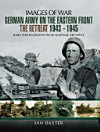Berlin 1945: The Final Reckoning
អំពីសៀវភៅអេឡិចត្រូនិកនេះ
Berlin 1945: The Final Reckoning begins with a study of the background to the battle and a description of events on the Eastern and Western Fronts before the Soviet forces reached Berlin. The city’s strategic importance to the German war effort and morale is considered, along with factors that caused the Western Allies to halt their advance on the Elbe rather than race the Soviet troops to the Reichstag. The German forces available for Berlin’s defence and their actual defensive preparations (or lack of them) are covered in depth, as is the devastating destruction caused by the ceaseless Allied bombing and remorseless shelling by the Soviet forces. The book describes in words and graphic pictures how, in a city reduced to rubble, a bitter hand-to-hand struggle developed between fanatical Nazis, SS troopers, old men and young boys of the Hitler Youth and the hard-bitten Soviet front-line troops bent on revenge. The suffering of the soldiers and civilians are revealed in full detail, with personal accounts from those involved in the battle.
The book also describes the events in the bunker behind the Reichschancellery, where Hitler spent his last months. Finally the reader learns how German commanders disobey the Fuhrer’s orders to fight to the last man, and the fate of the city was sealed. The final chapter discusses the full implications of the battle for the Germans and Soviets, and briefly describes the search for Hitler’s body. Berlin 1945: The Final Reckoning is a brilliant, superbly illustrated account of the battle that ended the Nazi dream of a 100-year Reich.
ការដាក់ផ្កាយ និងមតិវាយតម្លៃ
អំពីអ្នកនិពន្ធ
Karl Bahm has a Ph.D. from the University of Chicago on Modern Central European History, and is a Professor Emeritus at the Department of History, Politics, and Society at the University of Wisconsin-Superior.




